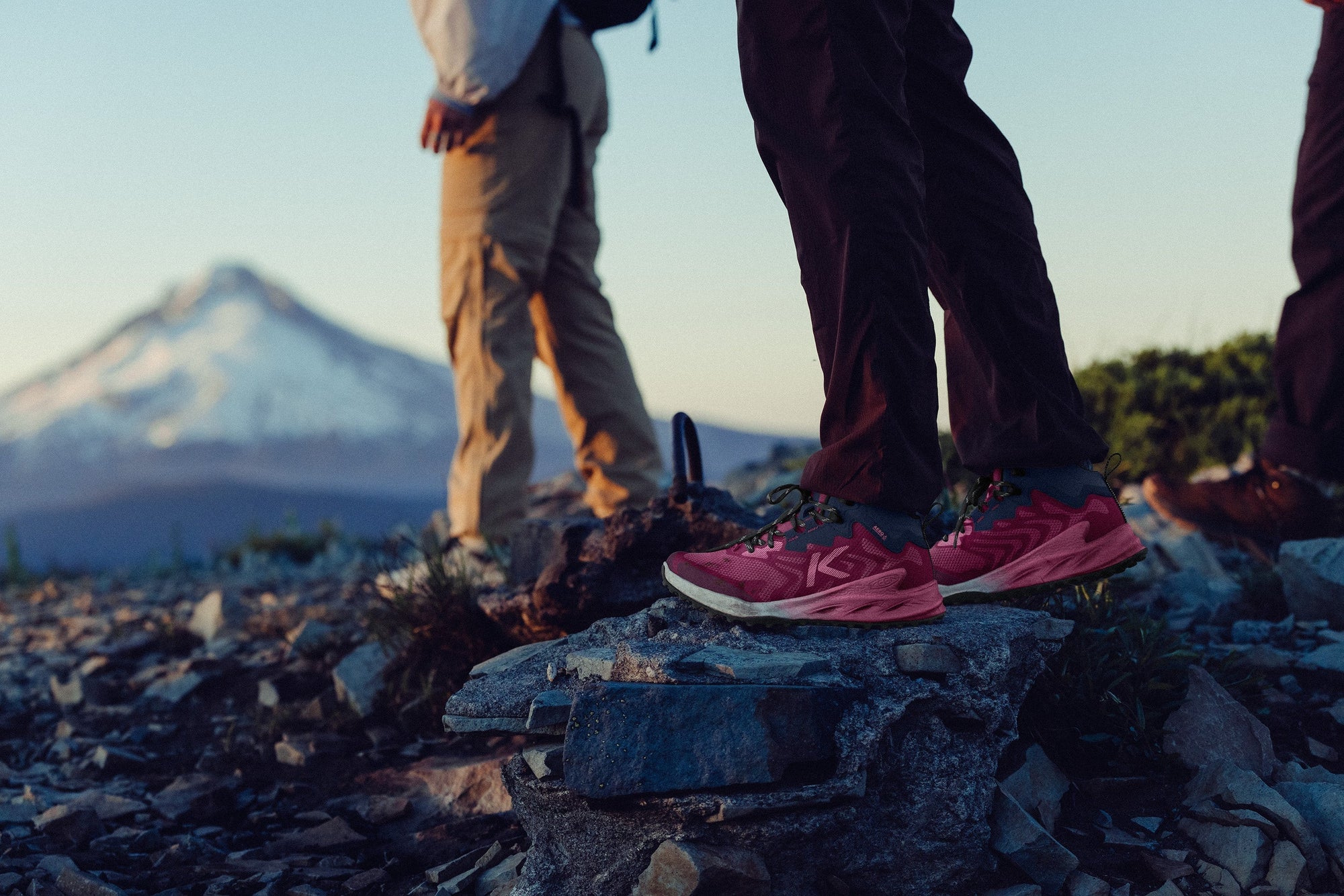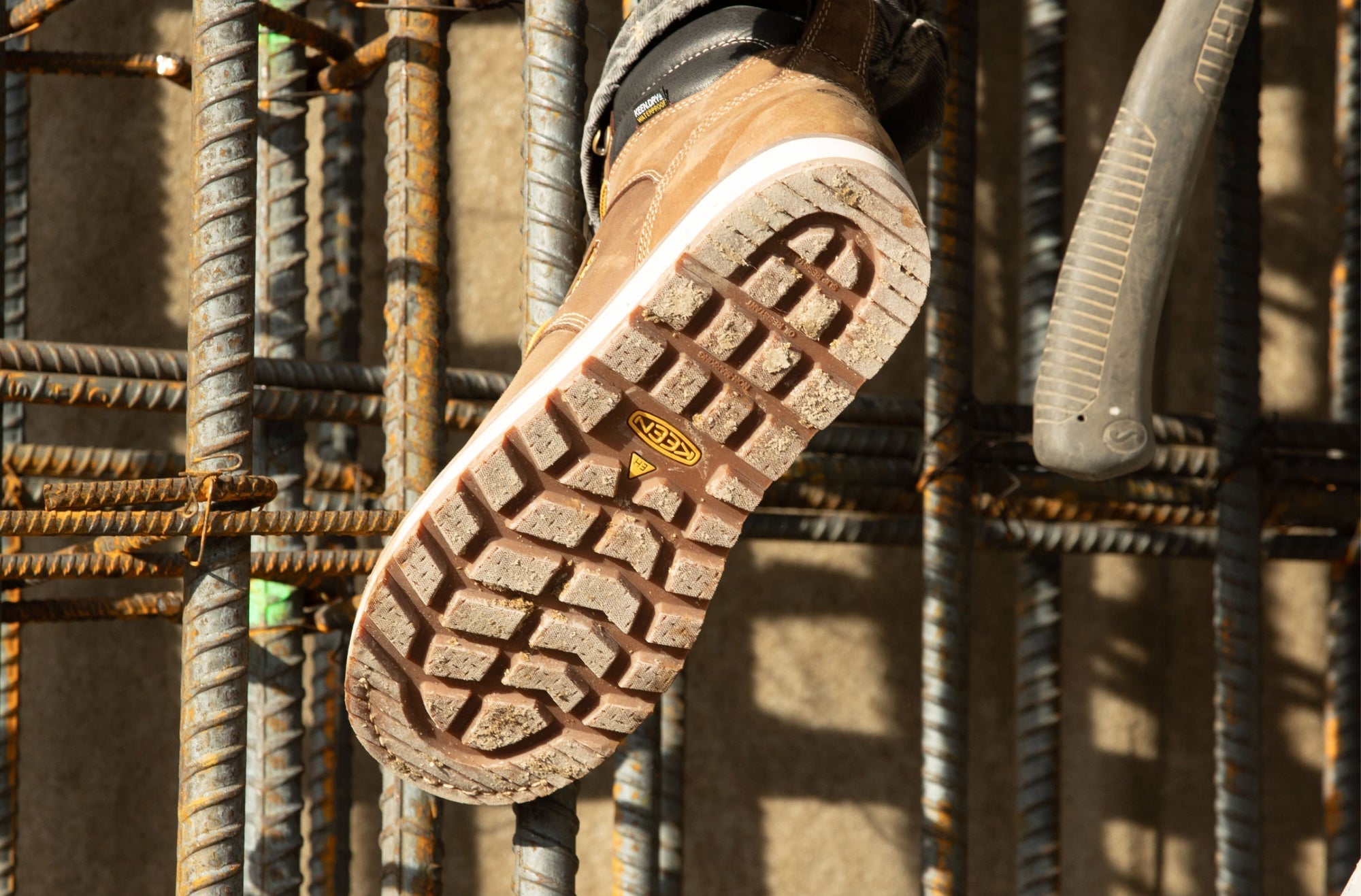When people see a beautiful beach, meandering river, or glistening lake, it’s common to hear words of appreciation, expressions of awe, or straight-up sighs of amazement. But, if those people happen to be parents of young children, you might also hear an undertone of restrained worry. As summer approaches, and families start to venture out on camping trips, river adventures, and afternoons at the beach, water safety is on lots of people's minds.
Since there are two sides to water safety (teaching and learning) we thought we’d dive in from both perspectives: fun-loving kids, and diligent parents. Check out our guide to outdoor water safety, so everyone in the family can get out there, soak up the sun, and enjoy some safe summer splashes.
10 Water Safety Rules to Teach Your Kids
Whether your family is hanging out on the beach for the afternoon or spending a morning on the boat, kids should know a few important things about water safety. Like, first of all, what is water safety? Well, it’s a lot of things, but when we asked KEEN kid Xander (age five), we think he put it pretty well when he said, “It means protecting your body.”
Here are 10 important safety rules to discuss with your child:
1. Always ask permission. Before getting in the water, make sure that your kid knows that they should always ask first. This can be a great opportunity for you to discuss the boundaries of where they should play. Which leads us to our next important rule . . .
2. Stay within the boundaries. Kids are likely to be eager to jump right into the water, but it's essential to take a few moments to go over where they can play and where they cannot. Point out noticeable visual markers like “that rock” or “Auntie’s beach towel,” so it’s easy for them to stay within the safe zone. A tip from KEEN kid Zoe (age 12): “Don’t go somewhere where you can’t get back.”
"I stick with my friends and don’t go past my limits."
– KEEN kid Sadie, age 14
3. Have a swim buddy. Make sure that there is a strong swimmer with your kiddo at all times. Reinforcing that the buddy system applies to water activities will help ensure that your kid doesn’t try to take off on their own. KEEN kid Sadie (age 14) knows the drill. When asked how she stays safe in water, she said, “I stick with my friends and don’t go past my limits.”
4. Keep safety gear on. Oftentimes, kids can find life vests, water sandals, or other safety equipment annoying, which may lead to them trying to take it off. Instruct kids to never remove these on their own. Non-swimmers should always wear a life vest near water and everyone should wear one on boats, rafts, and even while participating in many board sports.
 One of our 2021 KEEN Effect Kids grantees, Happiness is Camping, safely exploring the waterways of New Jersey.
One of our 2021 KEEN Effect Kids grantees, Happiness is Camping, safely exploring the waterways of New Jersey.
5. Look where you’re going. Rivers, beaches, and lakes all have their own set of obstacles and potential hazards. Teach kids to always enter water feet first (unless you’ve cleared an area for jumping or diving) and be aware of where they’re headed.
Pro tip: Water depth can be hard to gauge visually. If you’re unsure about whether an area is deep enough for jumping and cannonballing, have a swim around before your kid, and dive repeatedly to the bottom of the area to determine if it’s deep enough.
6. Play this, not that. Kids are creative. Which is great in most circumstances. But sometimes kids can come up with a game that isn’t safe to play in water. Before letting them loose at the shore, go over which types of games are not allowed. Avoid games that involve breath-holding competitions, dunking, or horseplay. One other tip? KEEN kid Nina (age 14) says, “This isn’t really about water safety, but don’t throw sand.”
7. Take breaks. Remind kids that if they are tired, thirsty, or feeling too hot, it means it’s time to take a break. Too much sun or physical exertion can be dangerous, so always encourage kids to listen to their bodies and rest as needed.
Pro tip: Have some special, tasty snacks around to help make sure that kids take breaks.
8. Be aware of moving water. It’s important to teach children about the different ways that water can move and the risks associated with moving water. For little kids, this rule can simply be, “avoid moving water.” But for older kids, it’s important that they know about waves, currents, and tides, so they’re better equipped to approach them safely.
Pro tip: If your kid is basically a water-loving little guppy, consider enrolling them in advanced swimming lessons or a water sports class. They’ll learn more about different types of water conditions and how to handle them.
9. Call for help. Kids are natural helpers, which means that if they see their buddy struggling in the water, their first instinct might be to swim over and help them. It’s important to teach kids to call for help instead, and then use the, “reach, throw, don’t go” method. This easy-to-remember rhyme reminds kids that they should extend a long object like a stick or pool noodle toward a friend to help, or throw a rope or extra floatation device toward them. Teaching this technique encourages kids to help without putting themselves at risk.
10. Stay calm. Helping kids learn to stay calm in potentially scary situations is a valuable skill even beyond the water. Practice breathing exercises ahead of time, and remind kids that one way to stay calm in the water if they get scared is to go into a horizontal backfloat and breath steadily.
RELATED: Making Waves So Black Kids Can Swim

Six Safety Rules for Parents to Know
When it comes to keeping kids safe in or around water, knowledge is power. In addition to the above safety rules for kids, here are a few rules that parents should know and follow:
1. Size up the situation. Be sure to assess the water before giving your kid permission to get in. Check for areas of moving water, and have a look around for any advisory signs discouraging water activity. Test the water temperature to make sure it’s suitable for swimming and playing. (Warm water has the potential for bacteria, and very cold water has the potential for shock.)
2. Go over the rules, every time. Sure, it may seem excessive, but reviewing water safety rules with your kids before every outing will really help them stick. Since each situation is a little different, and rules can change slightly as kids get older, be sure to highlight any changes or adjustments to rules.
3. Never leave your child unsupervised (even if they are an excellent swimmer). Always make sure that there is a responsible adult, trustworthy teen, or on-duty lifeguard keeping an eye on your child.
4. Look and listen. Even if you’re reading your book on the dock or making sandwiches at the beach, make sure your eyes and ears are open.
5. Pack the right gear. Before you head out for a day on the water, make sure you pack the gear your family will need to stay safe. Here are a few must-haves:
• Lifejackets (aka personal flotation devices or PFDs)
Make sure that your lifejackets are in good shape, that the closures still work well, and that they still fit your growing little ones.
• Sunscreen & sunglasses
Sun safety is also an important part of water safety. Make sure to pack sunglasses and plenty of sunscreen.
• Protective footwear
Jumping around the river bed, or stepping into a muddy lake, the right footwear helps keep feet protected. Check out our kids’ water shoes guide to find the best pair for your summer activities.
• Drinking water
After a long play session in the water, nothing is as refreshing as some cold drinking water. Pack a few water bottles so kids stay hydrated as they swim.
6. Consider taking a CPR class. Even if you never have to use it (which we hope), CPR training can make you feel a lot more confident taking your family out for a day on the water. The Red Cross offers classes all over the country.
Building sandcastles, swimming in the river, or boating with grandpa — some of the best things about summer involve water. Keep these water safety rules handy so that everyone in the family knows how to stay safe out there.


 One of our
One of our 









